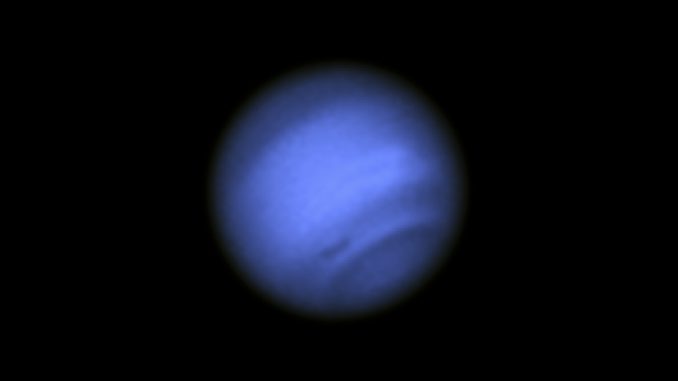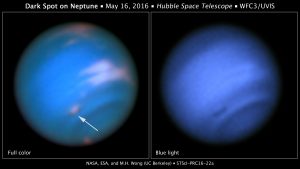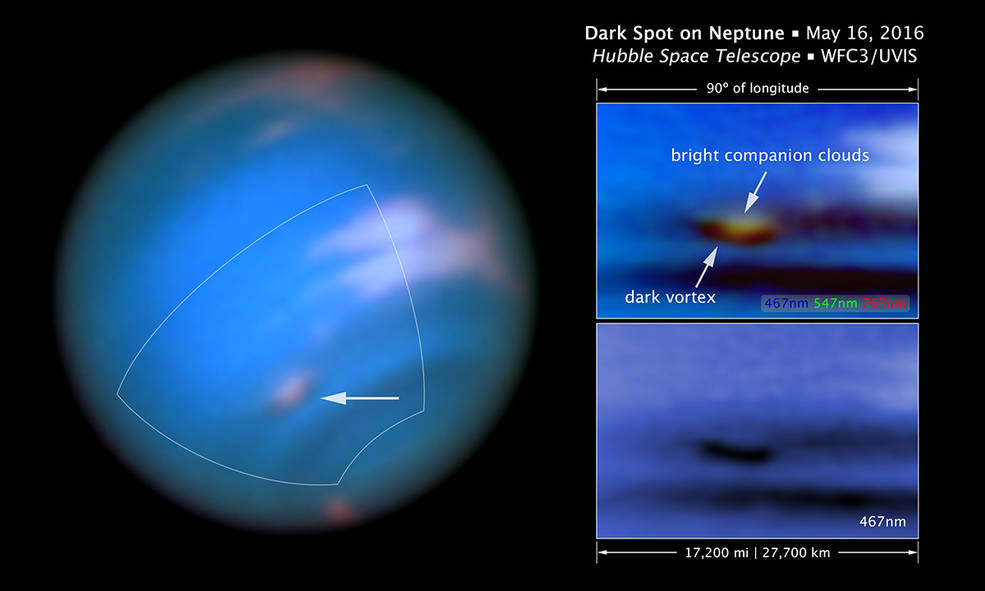
NASA’s Hubble Space Telescope (HST) has obtained images of a 3000 mile wide “dark vortex” floating around the atmosphere of Neptune.
It is the first time this century that NASA scientists have observed the high pressure weather system on the furthest planet from the sun in our solar system.

BYPASS THE CENSORS
Sign up to get unfiltered news delivered straight to your inbox.
You can unsubscribe any time. By subscribing you agree to our Terms of Use
Latest Video
 Nerdist reports:
Nerdist reports:
“Dark vortices coast through the atmosphere like huge, lens-shaped gaseous mountains,” said UC-Berkeley research astronomer Mike Wong, who headed the OPAL (Hubble’s Outer Planet Atmospheres Legacy) team that analyzed the Hubble data. “And the companion clouds are similar to so-called organic clouds that appear as pancake-shaped features lingering over mountains on Earth.”
The storm itself, though, is unlike anything we’ve ever experienced on Earth—at least in documented history. Neptune’s “maelstrom” is 3,000 miles across. Imagine a horrific weather system stretching across the entire contiguous United States. That’d be a major bummer.
Evidence of the vortices was first noted in 2015 when astronomers observed bright clouds on our distant planetary neighbor. Said clouds are formed when Neptune’s airflow is disturbed and forced upward, creating the vortex. That gas freezes into methane crystals at high altitudes and forms clouds.
Both Hubble and Voyager 2 have observed similar phenomena in the past, but this is the first time it’s been seen in a couple decades. Scientists plan to use the data to better understand both Neptune’s atmosphere and the dark vortex itself—lest they show up on nearer shores.

3,000-mile long storms probably aren’t actually coming to Earth anytime soon, but hey, I’ve seen The Day After Tomorrow, and I’ve seen the harrowing data coming from climate scientists’ work. There may be no need to fear the dark vortex (yet), but there’s plenty of reason to confront the preventable, human-induced climate changes that we’ve already begun to experience.


